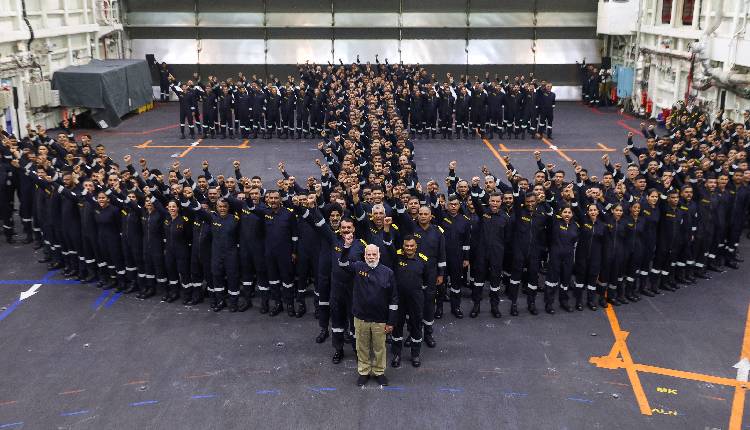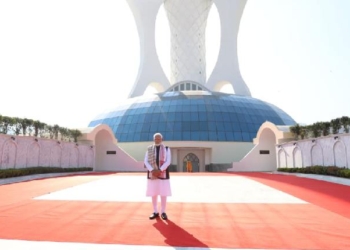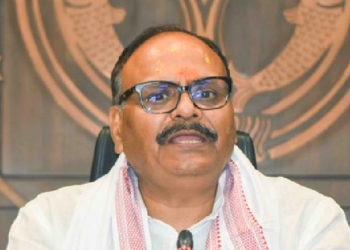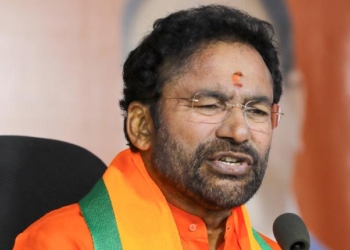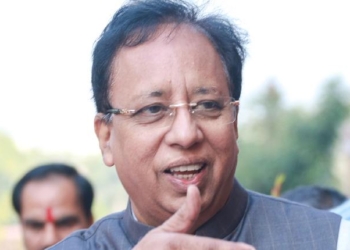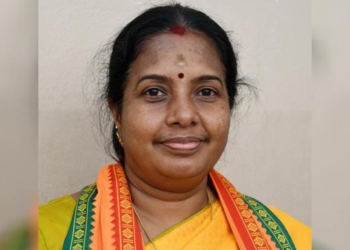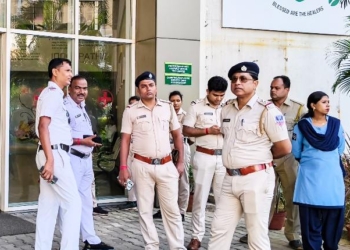New Delhi: Prime Minister Narendra Modi spent this year’s Diwali on board an Indian Navy vessel with which he shares a close association over the past three years. He had commissioned the country’s first indigenous aircraft carrier INS Vikrant at Cochin Shipyard Limited on September 2, 2022.
It marked a symbol of the country’s growing prowess of indigenous manufacturing and an achievement of a major milestone in the path towards ‘Aatmanirbhar Bharat’.
Incidentally, the Prime Minister had also unveiled the new Naval Ensign (Nishaan) at the same event, doing away with the colonial past.
He dedicated the new ensign to Chhatrapati Shivaji.
“I remember when INS Vikrant was being handed over to the nation, I had said that Vikrant is vast, immense, and magnificent,” he recollected on Monday, October 20. It was throwback to his 2022 address, where he had said: “Vikrant is huge, massive, and vast. Vikrant is distinguished; Vikrant is also special. Vikrant is not just a warship. This is a testament to the hard work, talent, influence and commitment of India in the 21st century.”
Reiterating those words, he reminded on Monday: “The day India received the Swadeshi INS Vikrant, our Indian Navy discarded a major symbol of colonial subjugation.”
And referring to the Ensign, he added: “Inspired by Chhatrapati Shivaji Maharaj, our Navy adopted a new flag.”
The commissioning of INS Vikrant was a proud moment, which ushered India among a select band of countries having niche capability to indigenously design and build an indigenous aircraft carrier.
The vessel is designed by Indian Navy’s in-house Warship Design Bureau (WDB) and built by Cochin Shipyard Limited, a Public Sector Shipyard under the Ministry of Ports, Shipping and Waterways.
INS Vikrant has been built with state-of-the-art automation features and is the largest ship ever built in maritime history of India.
It is 262.5 m long and 61.6 m wide, having a maximum speed of 28 Knots, with around 2,200 compartments, designed for a crew of around 1,600 men and women.
The ship is capable of operating 30 aircraft, comprising MiG-29K fighter jets, Kamov-31, MH-60R multi-role helicopters, in addition to indigenously manufactured Advanced Light Helicopters (ALH) and Light Combat Aircraft (LCA) (Navy).
Using a novel aircraft-operation mode known as Short Take Off But Arrested Recovery (STOBAR), INS Vikrant is equipped with a ski-jump for launching aircraft, and a set of ‘arrester wires’ for their recovery onboard.
Using such modes, MiG-29 fighters took off and landed on the short runway on board both in daylight and in the darkness of night in a demonstration of India’s air power.
“Witnessed an awe-inspiring Air Power Demo on INS Vikrant, showcasing precision and prowess,” posted the Prime Minister on social media X, adding, “The take-off and landing of MiG-29 fighters on a short runway, both in daylight and in the dark night, was a breathtaking display of skill, discipline and technological excellence.”
Chetak, bearing the national flag and the naval ensign, with the multirole MH 60 ‘Romeo’ and the versatile Kamov 31 helicopters were joined by fixed-wing aircraft like the Dornier and P8I, along with fighter jets like the MiG-29K in an impressive fly past.
Also on display was the Naval might of the western fleet on the sea waters, with warships including aircraft carriers INS Vikrant and INS Vikramaditya, destroyers INS Surat, INS Mormugao, INS Chennai, INS Imphal, INS Kolkata, frigates INS Tushil, INS Tabar, INS Teg, and INS Betwa, tankers INS Deepak, and INS Aditya, taking part in the exercise.
(IANS)




